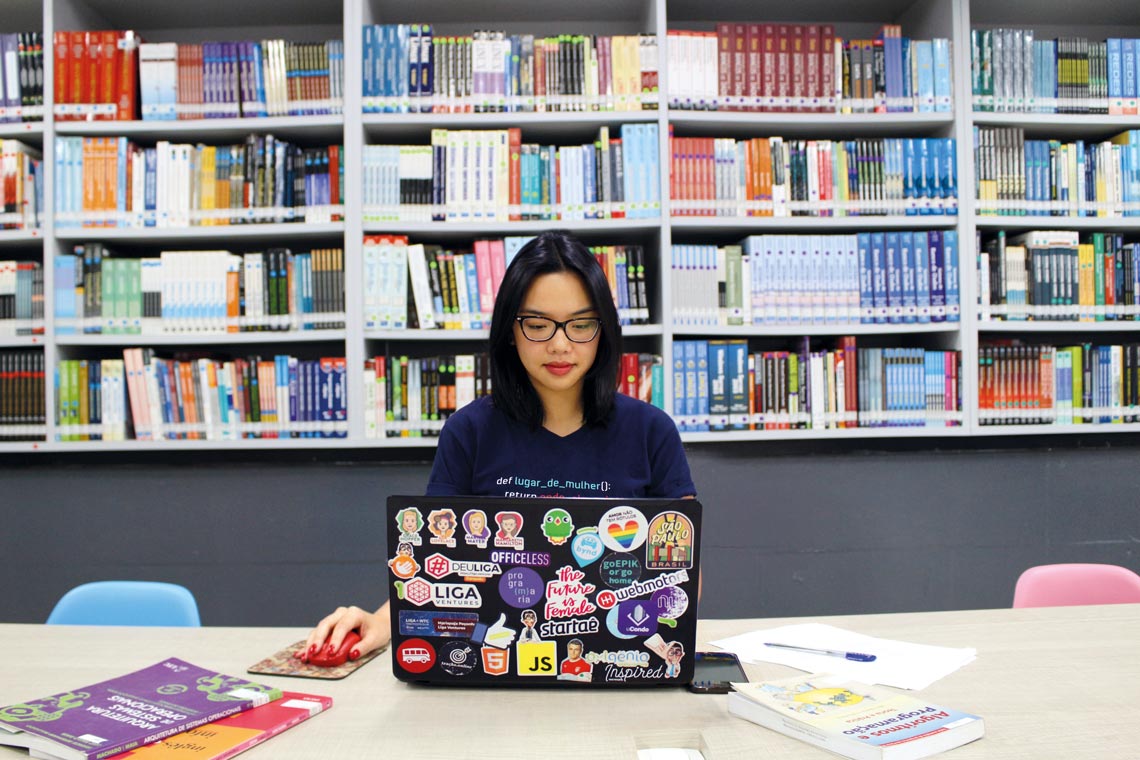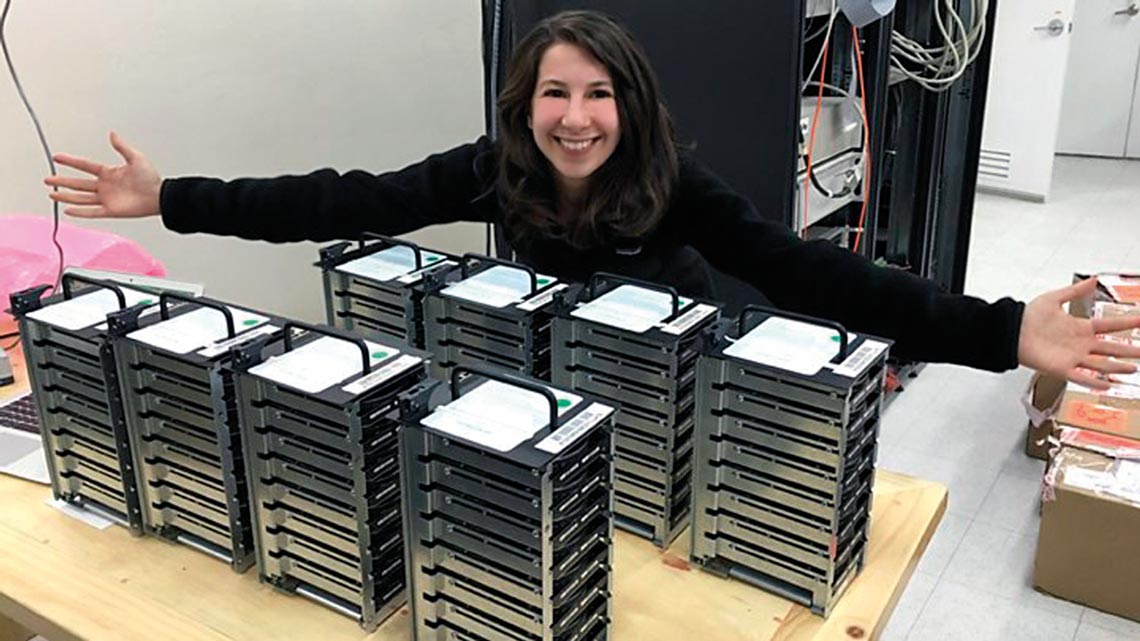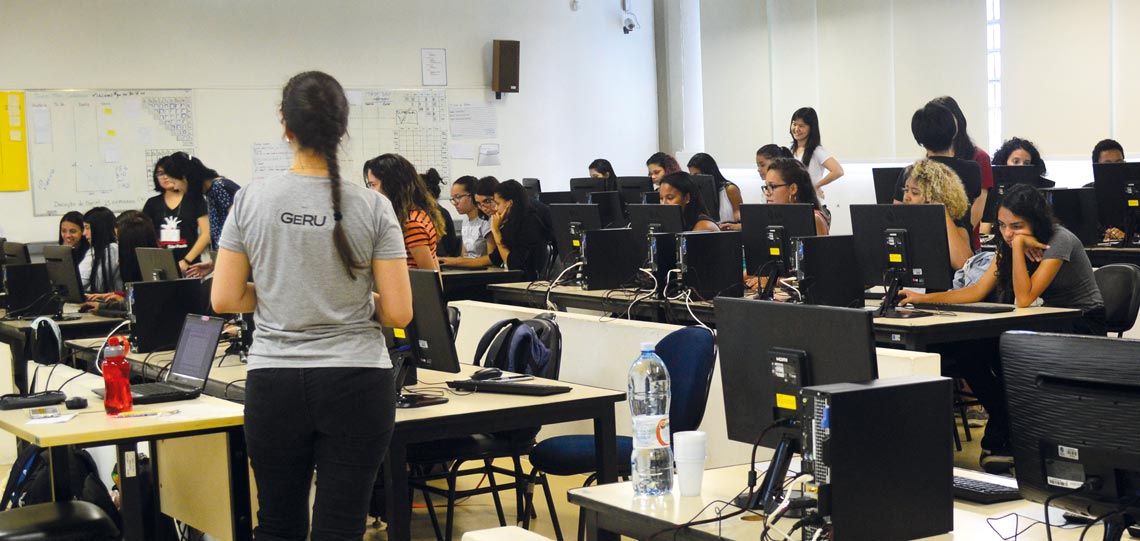On April 10, the world woke up to the first images of a black hole, located in the heart of the Messier 87 galaxy some 55 million light years away. The achievement was the result of a joint effort by more than 200 researchers from an international consortium known as the Event Horizon Telescope (EHT). One of them, American computer scientist Katie Bouman, 29, earned particular recognition. Three years ago, while studying a PhD in computer science and artificial intelligence at the Massachusetts Institute of Technology (MIT) in the USA, she led development of the algorithm that enabled the team of scientists to construct the image.
A photo of Bouman, reacting with joy as she sees the image of the orange ring for the first time, was published on social media on the day of the announcement and soon went viral around the world. The image has turned Bouman into one of the best-known faces of the work conducted by the EHT consortium—as well as making her a symbol for all women fighting to regain their place in computer science.
Women had a strong presence in computer science courses in both the US and Brazil until the mid-1980s, when their numbers fell and the field became more male-dominated. This downward trend began to attract the attention of higher education institutions, such as Carnegie Mellon University in Pennsylvania, USA, which was one of the first to attempt to understand and reverse the imbalance. Over time, similar efforts have spread to other institutions, including in Brazil. A number of initiatives have been launched in recent years with the purpose of encouraging girls and women to get involved in technology, programming, and entrepreneurship.
One such initiative in Brazil is ProgramaMaria, started in 2015 by journalist and entrepreneur Iana Chan, from São Paulo. The project began as a programming club for women. “Some friends and I decided to get together to learn more about technology and programming, and to discuss the number of women in these fields,” she says. The group identified a number of obstacles that contribute to the declining number of girls and women, such as a lack of role models inspiring them to study related courses and prejudices reinforcing the idea that technology is a masculine interest.

Eduardo Kenji Misawa
Iana Chan started PrograMaria to stimulate interest in technology and entrepreneurship among girls and womenEduardo Kenji MisawaChan eventually decided to turn PrograMaria into something bigger with the aim of stimulating female interest in technology via lectures, debates, and programming workshops in partnership with other companies attempting to increase the presence of women in computing. She also began offering a basic programming course for women, teaching them how to develop their own websites.
In three years, 115 women studied under PrograMaria. Many, such as Tuanny Ruiz, 25, have gone on to start a career in the technology sector. She says that she was always interested in mathematics and programming, but under pressure from her parents, she opted to study civil engineering. “Over time, I lost interest in the course.” She decided to study programming by herself alongside her degree. In October 2016, she took the PrograMaria course and attended its workshops. After graduating, she dove straight into the professional world of computing. She worked at various companies in São Paulo and was eventually offered a position as a programmer at a retail company in Canada, where she has lived since April.
Labor shortages
The need for more women in computer science is not solely about gender equality—it is also an economic issue. The number of computing courses in Brazil has grown by 586% in the last 24 years. At the same time, according to the National Institute for Educational Studies and Research (INEP), run by the Ministry of Education (MEC), the percentage of women enrolled in these courses fell from 34.8% to 15.5%. The same trend has occurred in the USA, where there are expected to be approximately 1.4 million computer-science jobs available by 2020 and only 400,000 graduates with the skills required to fill them, according to Code.org. “We can only bridge this gap by getting more women to work in the field,” says Chan.
One initiative trying to do just that is the Technovation Summer School for Girls, started this year by the Institute for Mathematics and Computer Science at the University of São Paulo (ICMC-USP). “The aim of the project is to teach girls aged 10 to 18 to develop applications that can solve social problems, as well as presenting career possibilities in technology and entrepreneurship,” explains computer scientist Kalinka Castelo Branco, a researcher at ICMC-USP and coordinator of the Exact Sciences Student Group (GRACE) that runs the program.

Wikimedia Commons
Bouman with all the data used to construct the image of a black holeWikimedia CommonsThe course is aimed primarily at public-school students in the state of São Paulo, reaching 74 girls and young women aged 10–18 in its first year. The participants learned how to develop an application and present it in public. “Those aged 15 and older were also taught how to draw up a business plan to put their ideas into action,” says Castelo Branco. This year, the number of attendees at the event more than doubled: 162 students participated in the activities, which require no prior computer knowledge.
The initiative is part of a larger project being developed by the ICMC at public schools in São Carlos. “Our project was funded by the CNPq [Brazilian National Council for Scientific and Technological Development] after a call for proposals issued at the end of last year to encourage greater participation and education of girls and women in science, technology, engineering, and mathematics [STEM subjects],” says the researcher. “We will have R$95,000 available over the course of a year.”
The money will be used to provide girls from five public high schools in the region with scholarships to study pre-undergraduate courses. It also includes a grant of R$400 for one female teacher from each school. The idea is for the beneficiaries to participate in university lectures and workshops on STEM subjects. Some of the funds will also be used as scientific initiation grants for ICMC undergraduates to tutor students at these schools.
Other efforts to reduce gender inequality in computer science include the Girls in Computing initiative run by the Computing Department at the Federal University of Sergipe (UFS), which encourages young women in the state to study courses in the field; Cunhatã Digital, which aims to motivate girls and women from the Amazon region; and Meninas Digitais, offered by the Brazilian Computer Society (SBC) to high-school students and older elementary-school students nationwide.




